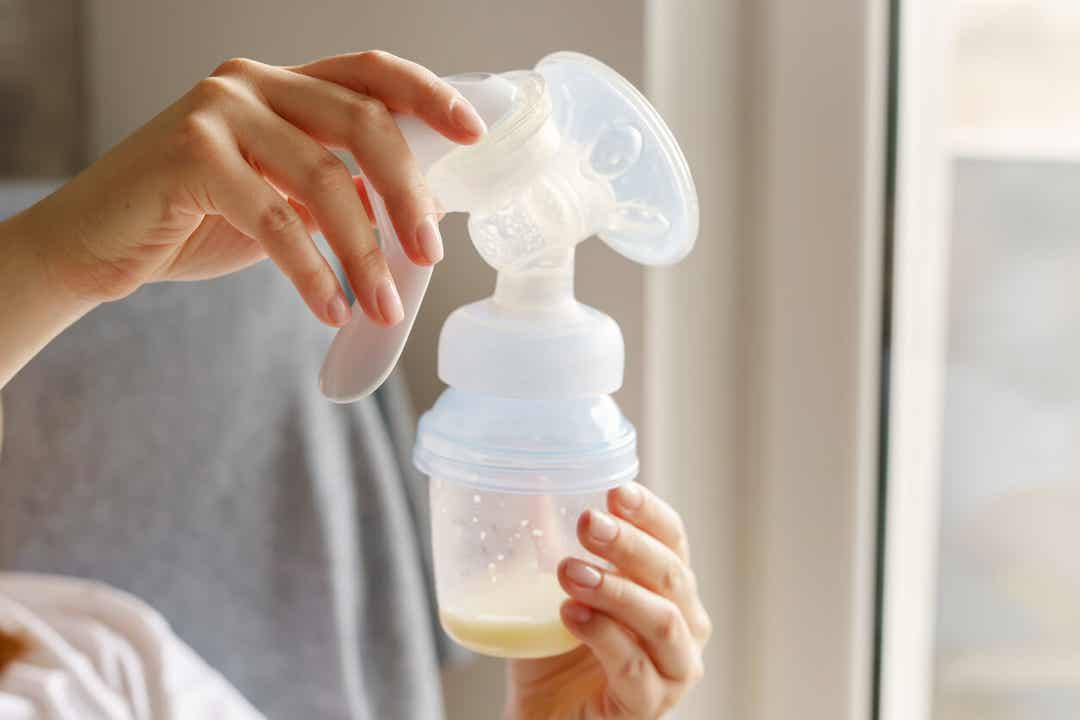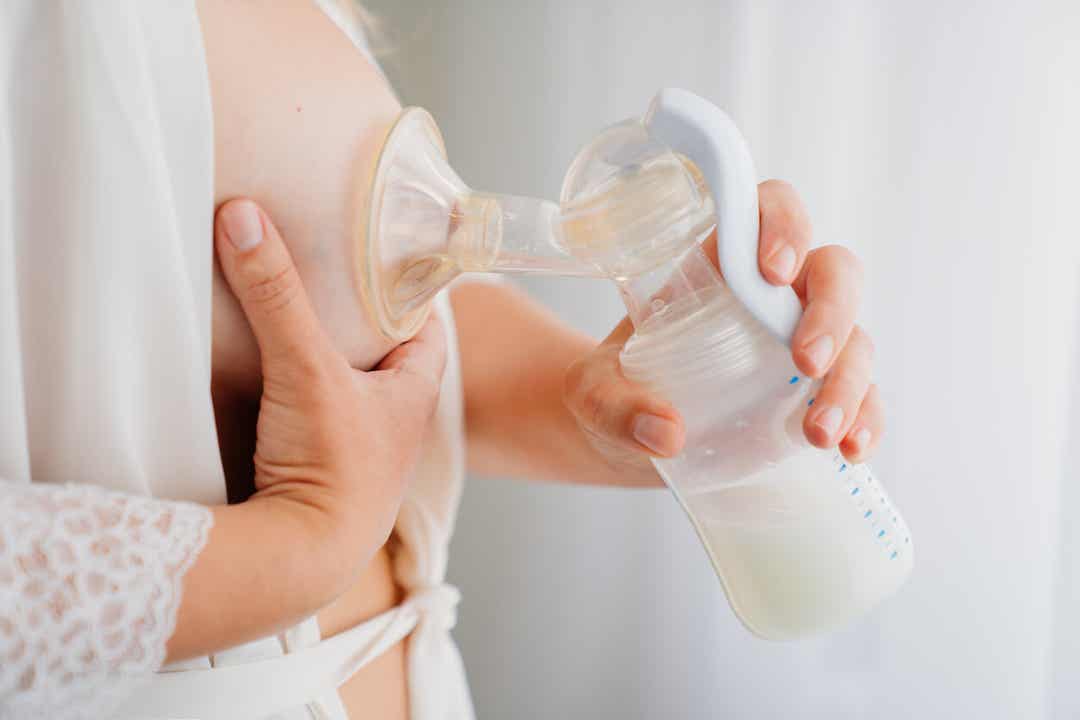How to Choose a Manual Breast Pump
If you want to express milk on an ad hoc basis, you've probably opted for a manual breast pump. Here you'll find the information you need to know which manual breast pump to choose.

If you’re already well established in breastfeeding and now want to express milk occasionally, either to have frozen milk from time to time or so that your partner or a caregiver can feed the baby while you’re away, you’ve probably opted for a manual breast pump. These devices offer a variety of advantages, but it can be hard to know just which one to choose.
With the myriad of brands and models on the market, it can be difficult to choose the one that best suits your needs. For this reason, we want to help you know what factors to consider when choosing the best manual breast pump for you.
Manual breast pump

Advantages
Manual breast pumps are cheaper than electric breast pumps. They’re also quiet and convenient for occasional pumping. What’s more, they’re very light and easy to transport. Many models include milk storage containers along with the pump.
Disadvantages
The only drawback is that they require extra work from the mother because she has to pump continuously to extract the milk. However, when the extractions are for occasional use, they’re usually the most popular among mothers.
What’s a manual breast pump like?
Depending on the brand of the pump, details may vary somewhat from one to another, but the components are usually nearly the same.
- Breast pump body: this pump’s made of rigid plastic and is usually transparent or semi-transparent. One of its ends has the shape of a funnel, which is the part that will be attached to the breast. Opposite this end is the lever that the mother must press in order to pump. And, between these two ends, there’s an opening that points downward and twists onto the milk collection bottles.
- Funnel or cup: this is the part of the breast pump that attaches to the breast. It’s important to check that there’s a good fit on the nipple because if it’s too small or too large, it’ll cause pain in the breast. What’s more, it can interfere with the extraction.
- Silicone pad: since manual breast pumps don’t have funnel sizes, they come with these silicone pads to attach to the cup and, therefore, better adjust it to the breast according to its size. They’re removable and washable.
- Lever: this is the part of the pump that the mother has to use for constant pumping. They’re usually ergonomic to offer the mother greater comfort as she pumps.
- Inner valve: this is a small valve in charge of creating the vacuum, so it’s very important not to lose it. Without this piece, it’s impossible to make the vacuum and your pump won’t work.
Washing and sterilizing your breast pump
When washing and sterilizing it, you must disassemble. If your baby’s a healthy child, you don’t need to sterilize it every time you use the pump. Just wash it with soap and water every time you’ve finished using it and when you’re going to use it again. Wash each piece individually. In premature babies, sterilization and washing of the breast pump must be more thorough.
Factors to consider
- Price: we often think that the higher the price of a product, the better it’s quality. However, price doesn’t mean that it’s the best pump for you personally. Rather, the best product is the one that best suits you and your needs, regardless of its price.
- Breast pump cup: the cup should fit all breast sizes comfortably. The skin in that area is very delicate, so it’s best to look for a breast pump that contains a pad that attaches to the cup and is made of a soft material, such as silicone.

- Comfort: you can look for a breast pump that offers comfort and convenience. As for noise, practically all manual breast pumps are quite quiet, as well as easy to carry because they’re discreet and lightweight. What you should look for is one with a lever that has an ergonomic shape so that the moment of extraction isn’t so tiring.
- The accessories that come with the pump: there are some brands that offer packs in which, in addition to the pump, there are accessories such as bottles for milk collection, bags for storing breast milk, or absorbent discs.
As for breast pumping…
It’s important to know that using a breast pump takes time and practice. It can be frustrating to see just a few drops come out at first, but this will pass once you become familiar with the pump. Gradually, you’ll see how the amount of milk you extract increases.
It’s important to emphasize that the amount of milk expressed with the breast pump isn’t synonymous with what the baby can extract by sucking. No breast pump, no matter how good it is, exactly mimics the great sucking ability that babies have.
